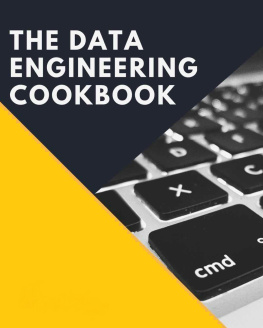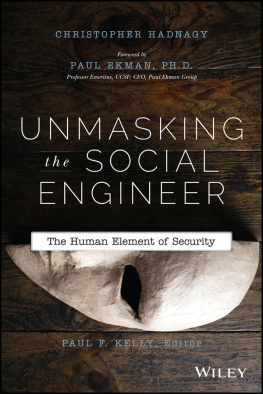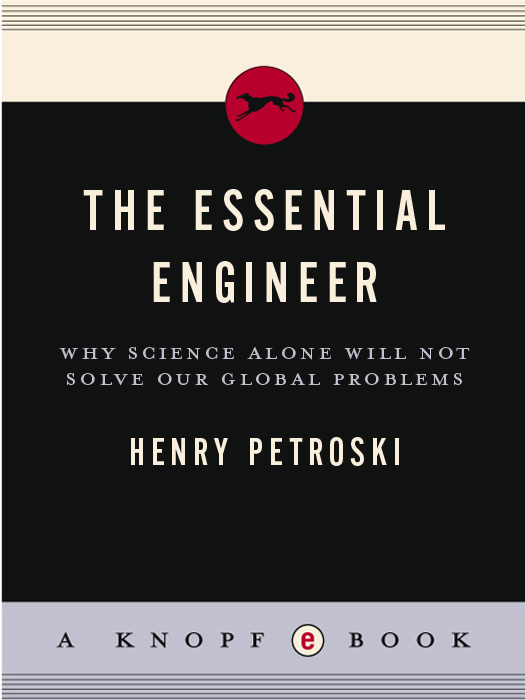14.
Preface
I am a faithful reader of Science Times, the Tuesday feature section of The New York Times, but I have often wished that it were called something more precisely descriptive, for the section is about more than just science. On a typical Tuesday about half of the sections content relates to health; sometimes there are even stories about engineering. Both medicine and engineering do use scientific knowledge and methods to solve relevant problems, but neither of them is simply an applied science. In fact, the practices of medicine and engineering are more like each other than either is like unqualified science: medical doctors and engineers both welcome all the relevant science they can muster, but neither can wait for complete scientific understanding before acting to save a life or create a new life-saving machine.
Nevertheless, the word science is commonly understood to include medicine, engineering, and high technology. Science is clearly a useful shorthand for a wide range of activities, but it also obscures the differences between them. It gives science a primacy that it may or may not deserve. This book seeks to illuminate the differences between science and engineering and thereby clarify their respective roles in the worlds of thought and action, of knowing and doing. In particular, it focuses on how they can interact to define and solve some of the most interesting and pressing problems of our time: how to address climate change, clean and renewable energy, and other global threats and challenges.
Some of the material in this book appeared first, in somewhat different form, in my regular columns in American Scientist, the magazine of Sigma Xi, the Scientific Research Society; and in ASEE Prism, the magazine of the American Society for Engineering Education. I first drafted the manuscript in Maine during the summer of 2008, drawing many of my examples and case studies from contemporary and near-contemporary events, as reported in The New York Times and elsewhere. Among the resources that were most helpful to me in identifying relevant stories were the daily summaries of news distributed via e-mail by Sigma Xi (Science in the News), the American Society for Engineering Education (First Bell), and the American Society of Civil Engineers (ASCE SmartBrief). I am grateful to the anonymous scanners of the news who produce these excellent digests. The final version of the manuscript was completed in Durham, North Carolina, during the fall of 2008 and winter of 2009, at which time I added further examples and made the material current as of then. However, I believe that the underlying principles upon which this book is based are independent of when it was written. It is a book about science and engineering, those uniquely human endeavors that will continue to shape and not follow the news of the day.
As always, I am indebted to my wife, Catherine Petroski, for taking time from her own work to be my first reader and thoughtful assistant. And I am pleased that my relationship with the publishing house of Alfred A. Knopf continues even after the retirement of my longtime editor and friend, Ashbel Green, to whom this book is dedicated. This is my tenth book with Knopf, and my first with my new editor, Andrew Miller. It has been a pleasure getting to know Andrew and working with him on this project. And, as I have come to expect, my experience with Ellen Feldman and the entire production team at Knopf has been superb.
1
Ubiquitous Risk
Our lives and those of our children and grandchildren are constantly at risk. Hardly a day passes, it seems, when there is not a story on television or in the newspaper about some new threat to our health and safety. If it is not toys decorated with lead-based paint, then it is drugsnot just pharmaceuticals but something as commonplace as toothpastecontaining adulterated ingredients, or even milk contaminated with industrial chemicals that found its way into candy sold around the globe.
Risk and reassurance are two key considerations of the activities of science, engineering, invention, and technologycollectively often referred to simply as science or science and technology. Whatever they are called, they play a critical role in modern civilization, being essential for the advancement of society and the protection of our quality of life. It is these human disciplines associated with discovery and design that help separate the good from the dangerous on the farm and in the factory, at home and at the office, and on battlefields and frontiers. While science and technology can be misused and become the source of ruin, we would be at even greater risk from tainted products and contagious diseases were it not for the benevolent use of what are among the achievements that make us most distinctly human. If science and technology are two-edged swords, they are also the essential weapons in detecting and managing everyday risk.
The bad milk that caused so much consternation a couple of years ago originated in China, which is among the largest exporters of food and food ingredients in the world. In order to increase quantities and thus realize greater profit, unscrupulous participants in the food supply
The Chinese milk scandal is a striking example of the use and misuse of science and technology and of the tragic consequences that can result. In themselves, science and technology are neutral tools that help us understand the world and allow us to work with its resources. People, however, are not necessarily neutral participants, and they can use their scientific understanding and technical prowess for good or ill. It may be that those who added melamine to diluted milk thought they were only being clever exploiters of chemistry. The unfortunate consequences of their actions were, of course, beyond mere venality, and ironically, the very same science and technology that served as tools of deception were also used to uncover the plot. Like risk itself, science and technology and their effects are ubiquitous.
It is not just potentially harmful products from abroad that can give us pause. Not long ago E. colicontaminated spinach from California proved to be the culprit in the deaths of three people and the illnesses of hundreds of Americans who trusted domestically grown
Not long after the tomato/jalapeo incident, peanut products containing salmonella were traced to a processing plant in Georgia. In the years preceding the discovery, the plant had been cited repeatedly by the state department of agriculture for health violations, ranging from unclean food preparation surfaces to dirty and mildewed walls and ceilings. On numerous occasions, when the companys own testing detected salmonella in its products, they were retested with negative results and the products were shipped. It was only after a salmonella outbreak was traced to peanut butter from the plant that it was shut down by the Food and Drug Administration and two years worth of peanut butter products were recalledafter the company was given an opportunity to approve the wording of the recall statement. A selective interpretation of scientific test results and a casual enforcement of technical regulations can imperil millions of people. Such incidents threaten the reputation that science and technology once held for objectivity and are likely to bring increased calls for tightened regulation.












